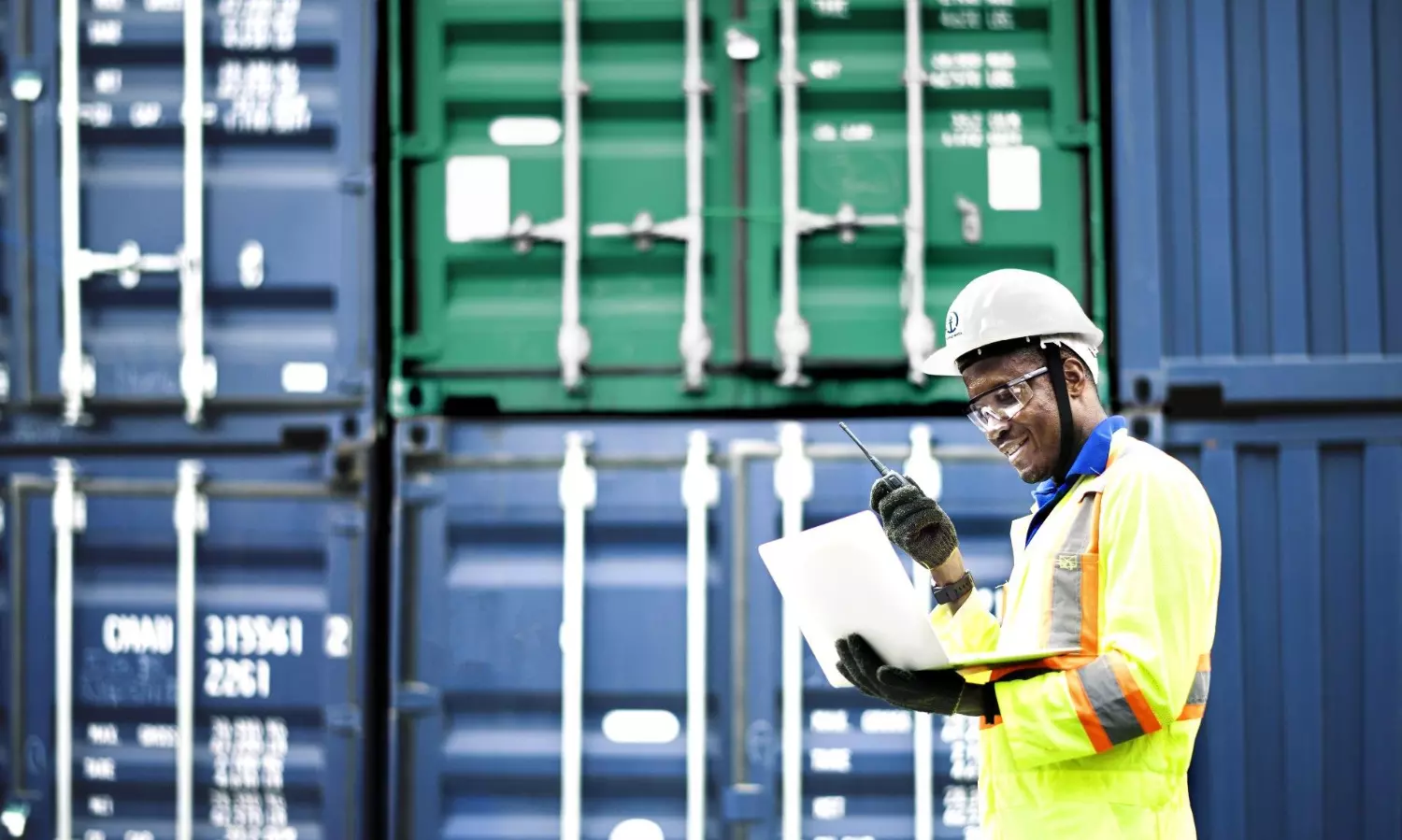Kenya: The East African gateway’s balancing game

The entire East African region is looking at a future of a connected Africa and world. But it all depends upon one logistically dominant country in the region: Kenya. Meanwhile, Kenya is busy finding its balance between infrastructure and trade originating from its neighbours.
On August 19, 2023, President of South Sudan Salva Kiir visited the Kenyan capital Nairobi and met his counterpart William Ruto at the State House for bilateral talks. The recent meeting between the two presidents highlights at least two important facts about the country Kenya.
First, Kenya is a key nation from the logistics perspective for the landlocked nations including South Sudan. For instance, all the discussion between the two leaders was dominated by regional trade and the infrastructure that supports it. Second, Kenya and its landlocked neighbour want to diversify their trade from the congested Port of Mombasa. During their joint talk, both leaders committed themselves to a specific infrastructural project which is not only crucial for Kenya and South Sudan but also for Ethiopia: Lamu Port-South Sudan-Ethiopia-Transport (LAPSSET) Corridor, also called Lamu Corridor, which makes Lamu Port the gateway to the world instead of Mombasa.
Even though the Port of Mombasa is facing many congestion issues due to the import and export it supports from neighbouring countries, and there are attempts to move cargo away from Mombasa, it still remains the most important and busiest port in the East African region. The port handled 26.6 million tonnes of cargo in the first nine months of 2023 from January to September compared to the 25.8 million tonnes handled in 2022, representing a three percent increase. Container traffic handled at the port was 1.2 million 20-foot equivalent units (TEUs) against 1.1 million TEUs handled in the same period.
Thus, it is not just that the landlocked countries are dependent on Kenya and Mombasa, but the Kenyan economy and its infrastructure depend on trade generated from these neighbours. In fact, the Port of Dar es Salaam is giving tough competition to Mombasa by attracting more cargo. For example, in a recent development, the political leaders of the Kisumu region in the western part of Kenya got involved when Ugandan President Yoweri Museveni decided to make the Port of Dar es Salaam instead of Kenya its entry point for oil imports. Because the Port of Kisumu, situated on the banks of Lake Victoria, which handled the oil for Uganda till now depends heavily on the movements of oil products and the recent decision can have negative impacts on the economic landscape of this region.
“Kenya could evolve into a regional manufacturing hub whereby raw commodity exports from other countries in the region would make a stop-over for processing before being exported.”
Udit Rathore, CEVA Logistics
Abiola Osho, associate vice president, investment, Africa Finance Corporation (AFC), thinks that some of the major challenges that Kenya has, similar to what you find in other countries as well, are congestion and high cost of transportation.
AFC is a Nigeria-based multilateral finance institution focused purely on infrastructure and the African continent, created and owned by African countries.
“One of the things that really drives this high cost of transport, is the fact that we don't produce enough. Africa exports more raw materials and imports more finished products. And when you do that, there's often a delta that goes with your transportation costs. In global maritime, you pay for the freight when you export raw materials. And when you import finished products, you also pay for the trip,” he said.
He added, “When you have those fundamental structural conditions, it challenges your ability to do trade facilitation and create regional value chains because you're struggling to be cost-effective in your trade.”
Lee I'Ons, president, Middle East and Africa, Kuehne+Nagel, noted that Kenya is an important logistics hub for Kuehne+Nagel, “thanks to its strategic location and established air, sea, and road connections in Mombasa and Nairobi to the rest of the region,” he said.
Talking about the business landscape of the country, he added, “Kenya is mainly known for exporting perishables, especially flowers (sea and air freight), and fruits and vegetables, such as mangoes, beans, and avocados (air freight). The country is also the world's largest exporter of tea and one of the top exporters of coffee (sea freight).”
Meanwhile, he made an interesting observation about the East African nation that it has been a source of innovation and talent not only for his company Kuehne+Nagel but also the logistics industry.
“Africa has a history of rapidly adapting and developing new technologies, and Kenya leads the way in this process. Keys to the future will be the reduction of inter-Africa trade barriers and the training and development of logistics professionals,” he said.
Thus Africa forms part of our Roadmap 2026 strategy, the basis for their vision 2030.
He adds, “As such, we will invest in people development, helping cultivate skills, knowledge, and expertise, and nurture client relationships, fostering organisational growth across the continent, with Kenya being a key to East Africa.”
“While Kenya boasts a vast network of roads, widening many to dual carriage would benefit trucking. Extending the Standard Gauge Railway (SGR) to Uganda would introduce time and cost-efficient transport between the two countries.”
Lee I'Ons, Kuehne+Nagel
On the same line, Udit Rathore, head of ground & rail, East Africa, CEVA Logistics, opined that the future is still bright in Kenya since there are numerous opportunities for manufacturing activities, allowing the country to shift from exporting raw commodities to processed products.
“Kenya has a young and well-educated population to embark on this trajectory. It could even evolve into a regional manufacturing hub whereby raw commodity exports from other countries in the region that are passing through Kenya’s corridor would make a stop-over for processing before being exported to global markets. Kenya’s logistics environment and its strategic position can be seen as a backbone to this vision,” he said.
“With enhanced manufacturing and processing capacity, the logistics landscape could also blossom as the demand for warehousing, customs clearance and shipping would increase,” he added.
As Kenya moves forward with a vision to grow its economy by transforming it into a manufacturing and transport hub, it needs to collaborate with their neighbouring countries and should try to find the right balance between trade and politics. Kenya is an active member of several organizations aiming at creating a single trading market across the region, such as the African Continental Free Trade Area (AfCFTA) and the East African Community (EAC).
I'Ons observed, “United, cross-border trade industry will facilitate improved efficiency of all components of the logistics industry. The growth of the industry will inevitably lead to network improvements. While Kenya boasts a vast network of roads, widening many to dual carriage would benefit the trucking industry. Extending the Standard Gauge Railway (SGR) to Uganda would introduce time and cost-efficient transport between the two countries.”
Rathore also advocates for increased collaboration particularly when it comes to overcoming the challenges that Kenya faces from a logistics perspective.
He said, “Securing the best outcomes requires a consistent approach from the government and meaningful dialogue with key stakeholders. Also, one of the things that would be beneficial to the industry could be government improvements that could help accelerate the modernisation of an already solid logistics environment in Kenya would relate to introducing up-to-date technology to automate the port of Mombasa. This could be done by learning from best global practices and adopting a solution that would be optimal for Mombasa Port.”
Thus the future of Kenya depends upon the fine balance it may have to play in terms of attracting cargo from the landlocked countries with competitive pricing while simultaneously building the infrastructure to support it.
This feature was originally published in the Nov-Dec 2023 issue of Logistics Update Africa


